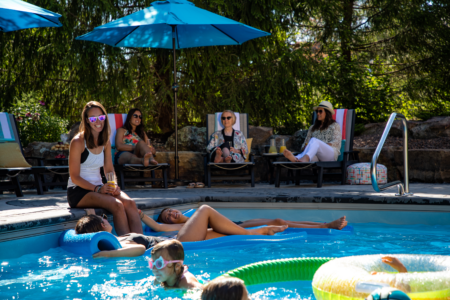
Are you thinking about investing in something big to maximize your family’s free time? For many homeowners eager to have fun and make memories with children or extended family, installing a backyard fiberglass pool or purchasing an RV are both attractive options. Both offer memorable experiences and near-limitless opportunities for family bonding, but which one fits your lifestyle or budget better?
We sell fiberglass pools, so it’s no secret we’re partial to them. Still, this guide isn’t a sales pitch. It’s here to help you make an informed choice that suits your life, goals, and how your family prefers to spend its downtime. Check out the lifestyle perks, upkeep demands, and long-term costs of both options so you can decide which investment will bring you and your family the most value and enjoyment.
Freedom at Your Fingertips vs. Adventure That Takes Planning
RV Ownership: The Road Is Calling, But So Are the Logistics
Owning an RV feels like the ultimate invitation to explore the country. Hit the road, wake up with mountain views, or park near a beach; there’s an undeniable appeal of freedom.
But every RV journey actually begins with a hefty checklist. You’ll need to map routes that are RV-friendly, schedule campground stops, and make reservations amid typically busy peak travel seasons. Then comes packing clothes, toiletries, food, cooking supplies, bedding, entertainment, emergency gear, and so much more.
Every trip becomes a mini-moving day, and the work doesn’t stop once you’re on the road. Setting up camp, leveling the RV, hooking up utilities, and managing waste tanks all require time and effort. Returning home means restocking, unloading, and cleaning. It’s rewarding but far from spontaneous or relaxing at all times.
Backyard Fiberglass Pool: Fun on Your Terms, Any Day of the Week
A backyard pool doesn’t need reservations, maps, or fuel. It’s right there, always ready when you are. Whether you have 20 minutes before dinner or want to unwind with an evening swim before bedtime, a fiberglass pool offers instant relaxation and recreation. You don’t need to pack or plan ahead. Just grab a towel and go.
A backyard fiberglass pool’s accessibility is priceless for many busy families. After-school swims, weekend BBQs, or impromptu gatherings with neighbors all become second nature. There are no limits, schedules, or crowded public amenities; just your own space, your own rules, and as much pool time as your heart desires.
Maintenance Demands: How Much Work Comes with the Fun?
RVs: Time-Consuming Tasks and Scheduling Headaches
Keeping an RV road-ready means staying on top of both mechanical and residential maintenance. You’ll need to routinely check engine fluids, inspect brakes and tires, clean air conditioning filters, reseal roof seams, and flush the water system. Even minor neglect can lead to costly and time-consuming repairs. You must perform tasks like winterizing the plumbing or sanitizing the freshwater regularly and carefully.
You can do some of this maintenance yourself, but it takes time, tools, and know-how. Many owners opt to schedule appointments at an RV service center, which often means waitlists and hefty labor charges. If something breaks on the road, emergency repairs can delay your trip and add hundreds to your costs.
Fiberglass Pools: Easy Upkeep, Lasting Enjoyment
Compared to RVs, fiberglass pool maintenance is refreshingly less demanding. Thanks to their smooth, non-porous surface, fiberglass pool shells naturally resist algae, reducing the need for chemicals and scrubbing. Most owners spend about an hour or less each week on pool tasks, such as skimming, vacuuming, and checking water chemistry.
There are no moving parts, no engines to maintain, or oil to change, just a peaceful, beautiful body of water ready when you are.
Financial Implications: Where Does Your Money Go?
RV Ownership: High Upfront Cost with Ongoing Bills
Prices for RVs, not unlike those for pools, can vary widely. According to HomeGuide, towable RV models range from $20,000 to $100,000, while full motorhomes can cost anywhere from $50,000 to $600,000. But the spending doesn’t stop there.
RV insurance premiums range from $500 to $1,500 annually, depending on your RV’s type, age, and use. If you can’t park it at home, RV storage adds another $75 to $400 per month. Gas is a major expense, too, as many RVs average only 6 to 10 miles per gallon. Even short trips can rack up hundreds in fuel costs. According to Cruise America, campground stays and park reservations can range from $20 to $100 per night, while annual maintenance, inspections, and repairs can easily cost $1,000 to $2,000 or more.
One final financial implication to consider: Don’t forget about depreciation. Your RV will begin losing value the moment you drive it off the lot.
Fiberglass Pools: A Lasting Investment in Your Home
Fiberglass pool costs can range from $40,000 to $120,000 or more, depending on size, layout, and extras like tanning ledges, water features, or premium decking, landscaping, and outdoor living space. That’s a big investment, but it’s one that stays right where you need it and grows with your family.
There are no campground fees, no insurance premiums, and no refueling costs. Maintenance expenses are minimal thanks to efficient pool systems and the durable nature of fiberglass shells. More importantly, a pool can increase your home’s market value and curb appeal. When it’s time to sell, many buyers see a well-designed backyard oasis as a major plus.
Family Engagement: Daily Moments or Occasional Trips?
RVs offer incredible opportunities to see the world and create meaningful memories, but only when the stars align. You need to take time off work, coordinate with the kids’ busy schedules, and prepare for long stretches on the road. The payoff can be great, but it isn’t something you do on a whim.
A backyard pool, on the other hand, fits into your life seamlessly. It doesn’t require a vacation or an overly intricate plan. Whether it’s the kids burning energy before bedtime, a quiet soak under the stars, or a spontaneous weekend pool party, the memories happen often and easily. Your backyard pool will always be ready for family connection, fun, fitness, and every moment in between.
The Verdict: Everyday Oasis or On-the-Go Adventure?
Both RVs and backyard pools offer fun, luxury, and ways to create lasting memories with the people you love. But the trade-offs are clear.
If your heart yearns for the open road and you’re okay with planning, logistics, and maintenance, an RV could be a great match. But if you crave more frequent, less stressful ways to bring joy and connection into your daily life, a backyard fiberglass pool is a smart, lasting investment.
Want to explore what your perfect pool could look like? Use our Pool Cost Calculator to get a ballpark estimate, or check out the Pool Selector Tool to browse stunning design options. When you’re ready, connect with a trusted local Thursday Pools dealer to take the next step toward your new everyday oasis.
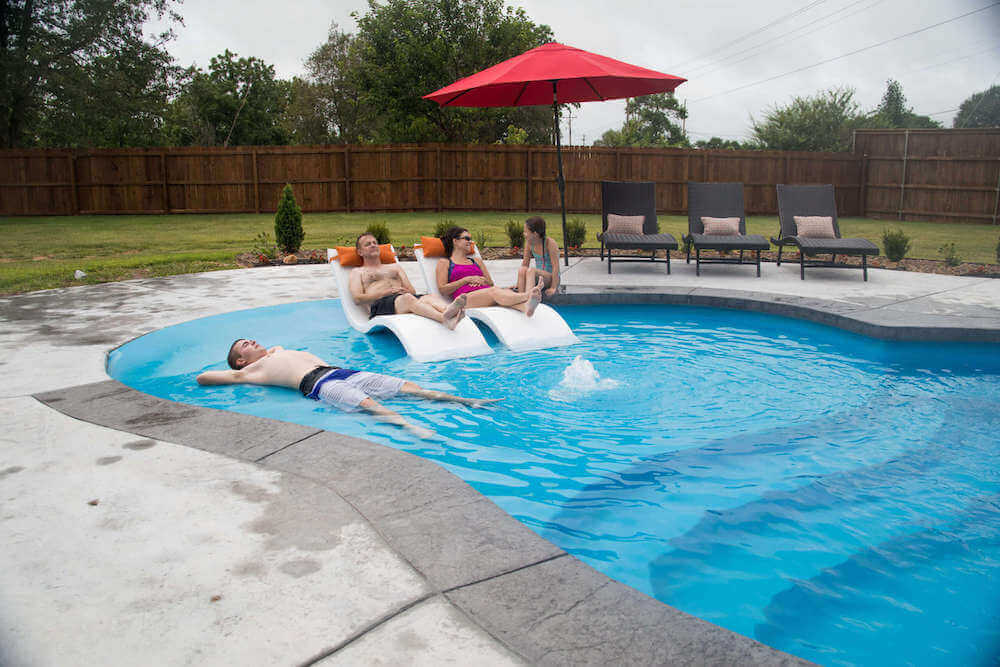
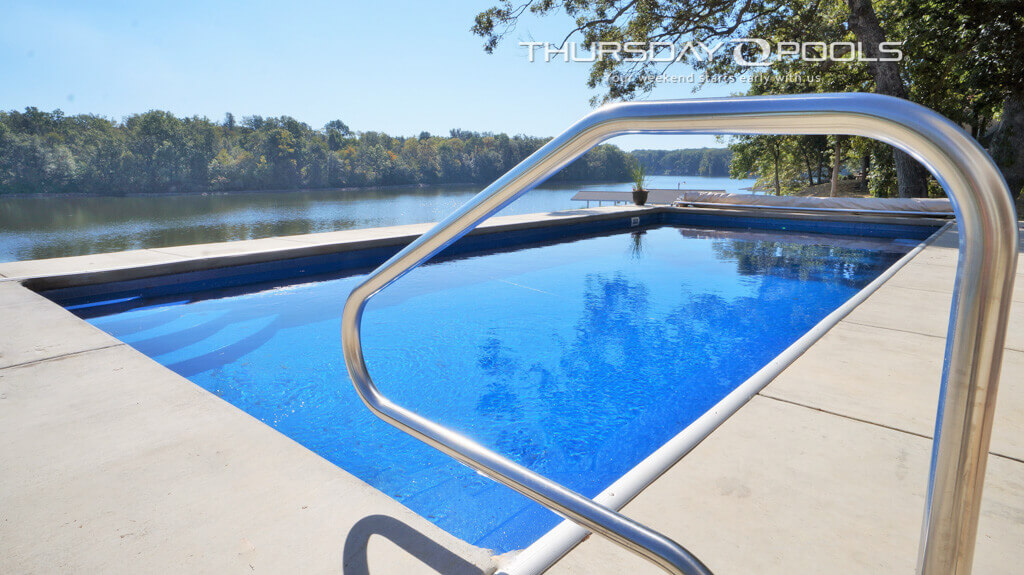
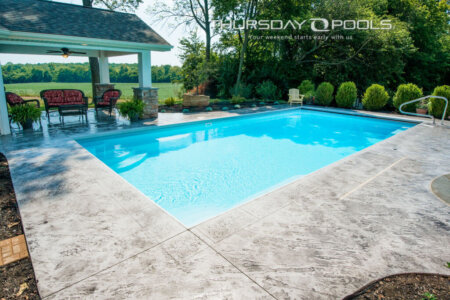
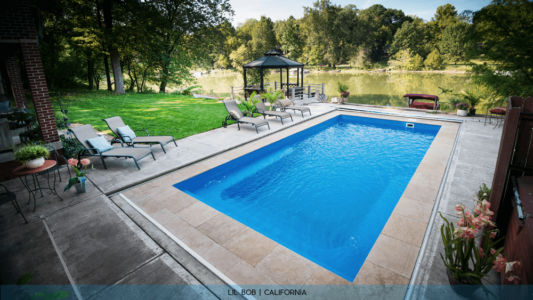
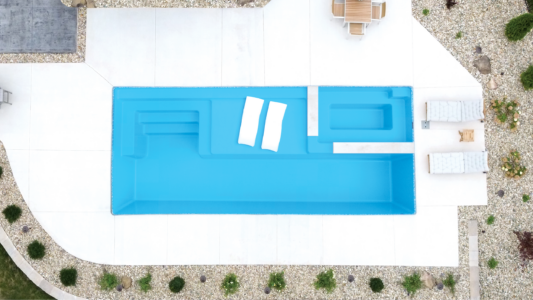
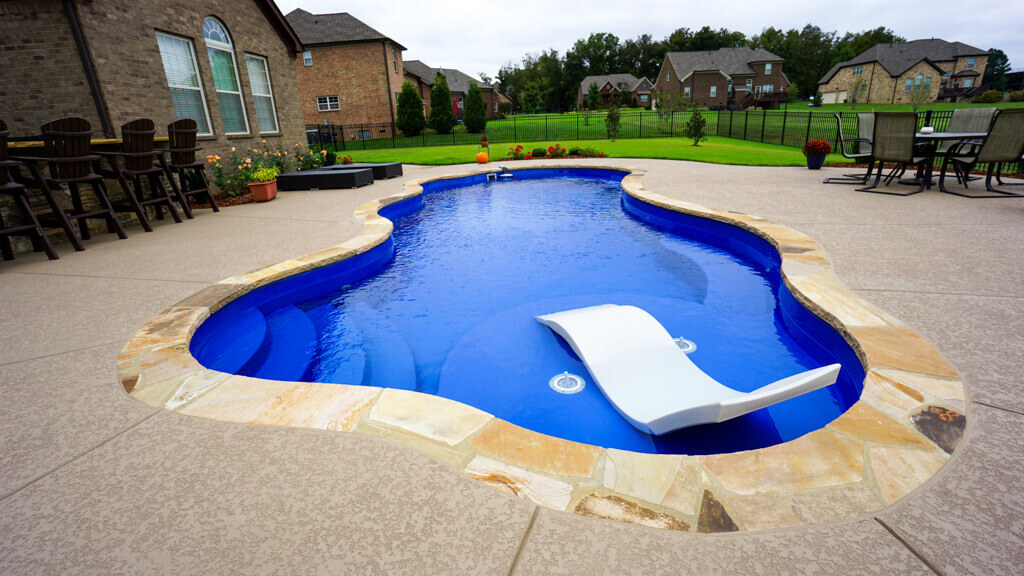
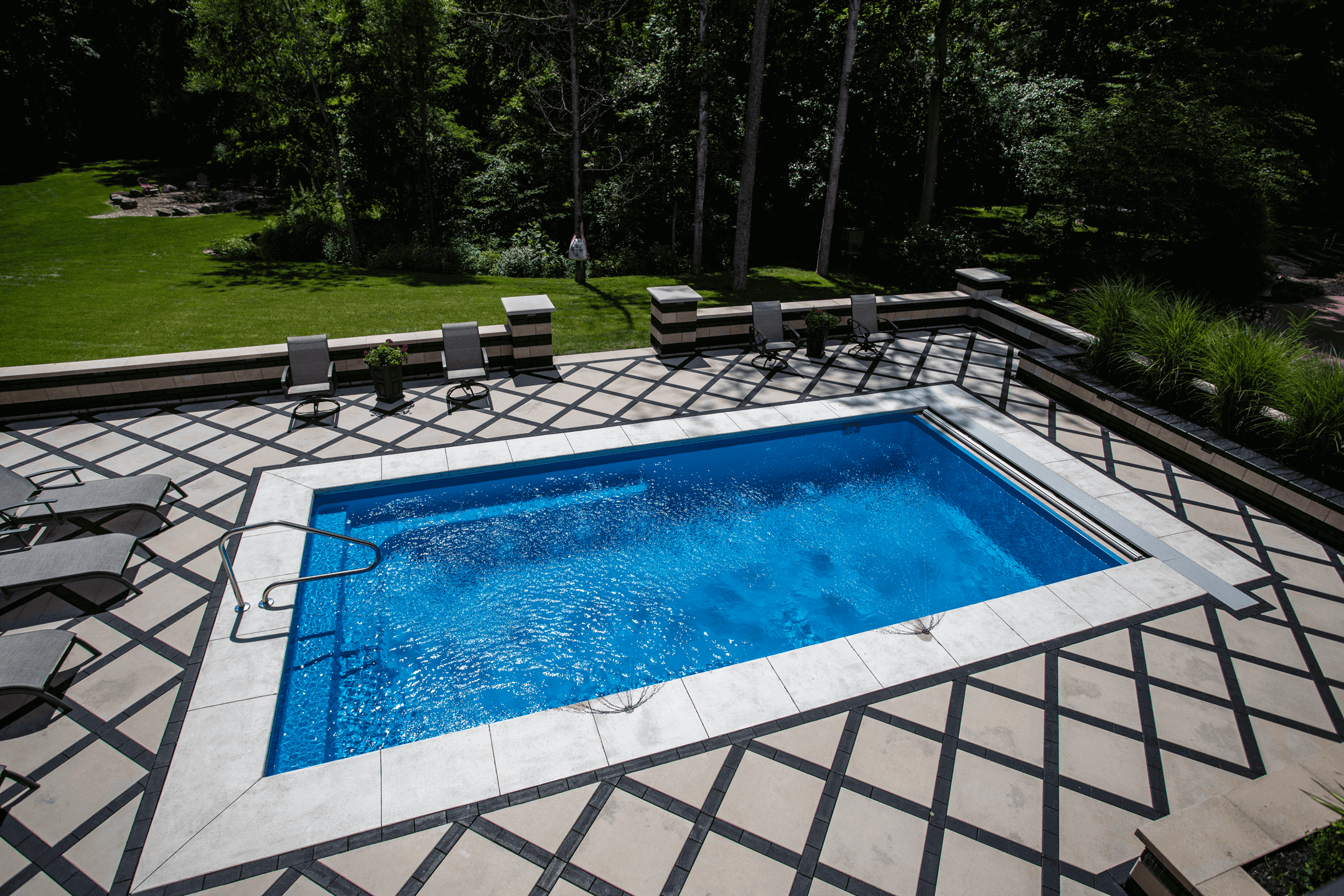
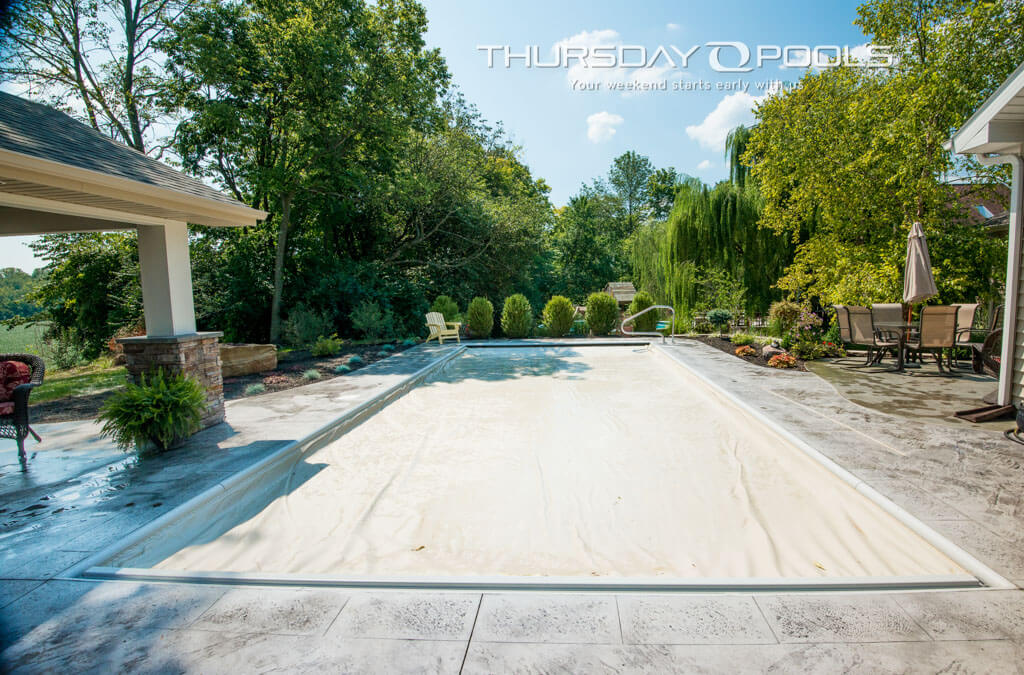
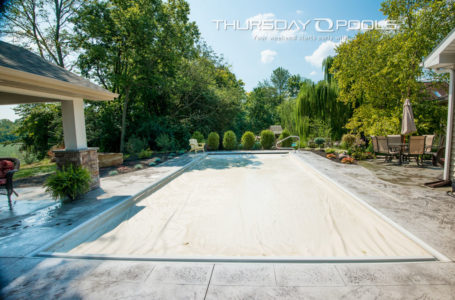 For some, it’s a season of denial, but when that first multi-hued leaf hits the water, it’s hard to ignore the reality that it’s fast becoming time to close the pool. If you’re in a temperate climate, you’ll want to winterize your pool to set yourself up for continued enjoyment when the weather is warmer. Whether closing an above-ground pool or an inground pool, many of the same principles apply. However, your regimen and costs may vary if you are closing a vinyl or gunite inground pool. For a more in-depth comparison of fiberglass vs vinyl vs gunite, download our
For some, it’s a season of denial, but when that first multi-hued leaf hits the water, it’s hard to ignore the reality that it’s fast becoming time to close the pool. If you’re in a temperate climate, you’ll want to winterize your pool to set yourself up for continued enjoyment when the weather is warmer. Whether closing an above-ground pool or an inground pool, many of the same principles apply. However, your regimen and costs may vary if you are closing a vinyl or gunite inground pool. For a more in-depth comparison of fiberglass vs vinyl vs gunite, download our 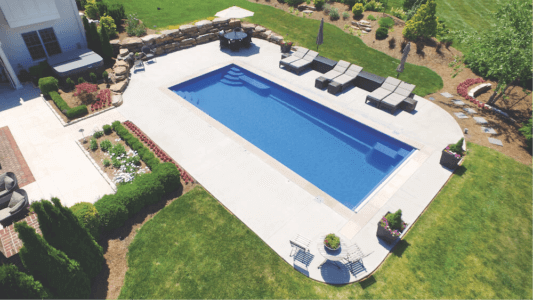
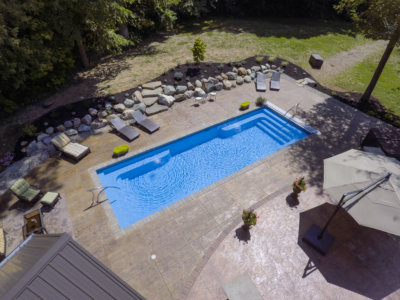
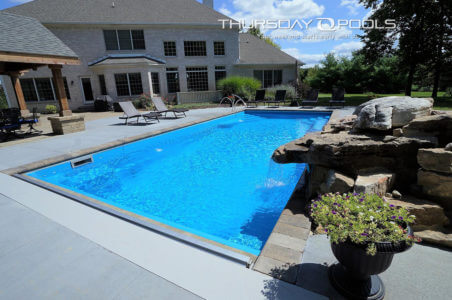
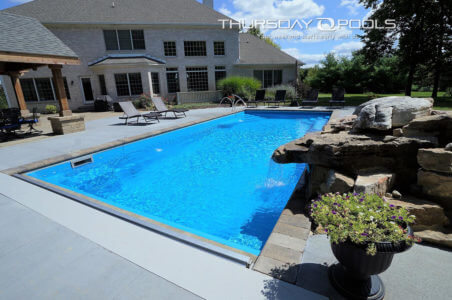 thing to help you accomplish those goals. Water exercise has loads of health benefits, including weight loss, increased strength and muscle tone, joint pain relief, improved cardiovascular health, reduced stress, and increased fun (which is also very good for you!)
thing to help you accomplish those goals. Water exercise has loads of health benefits, including weight loss, increased strength and muscle tone, joint pain relief, improved cardiovascular health, reduced stress, and increased fun (which is also very good for you!) 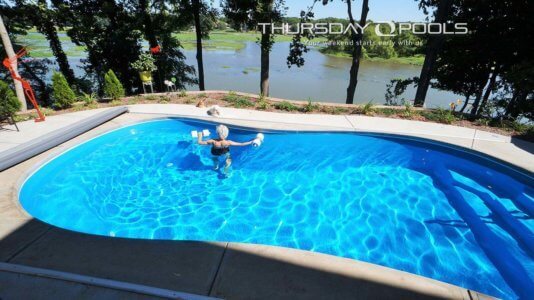 Ready to wade on in?
Ready to wade on in?